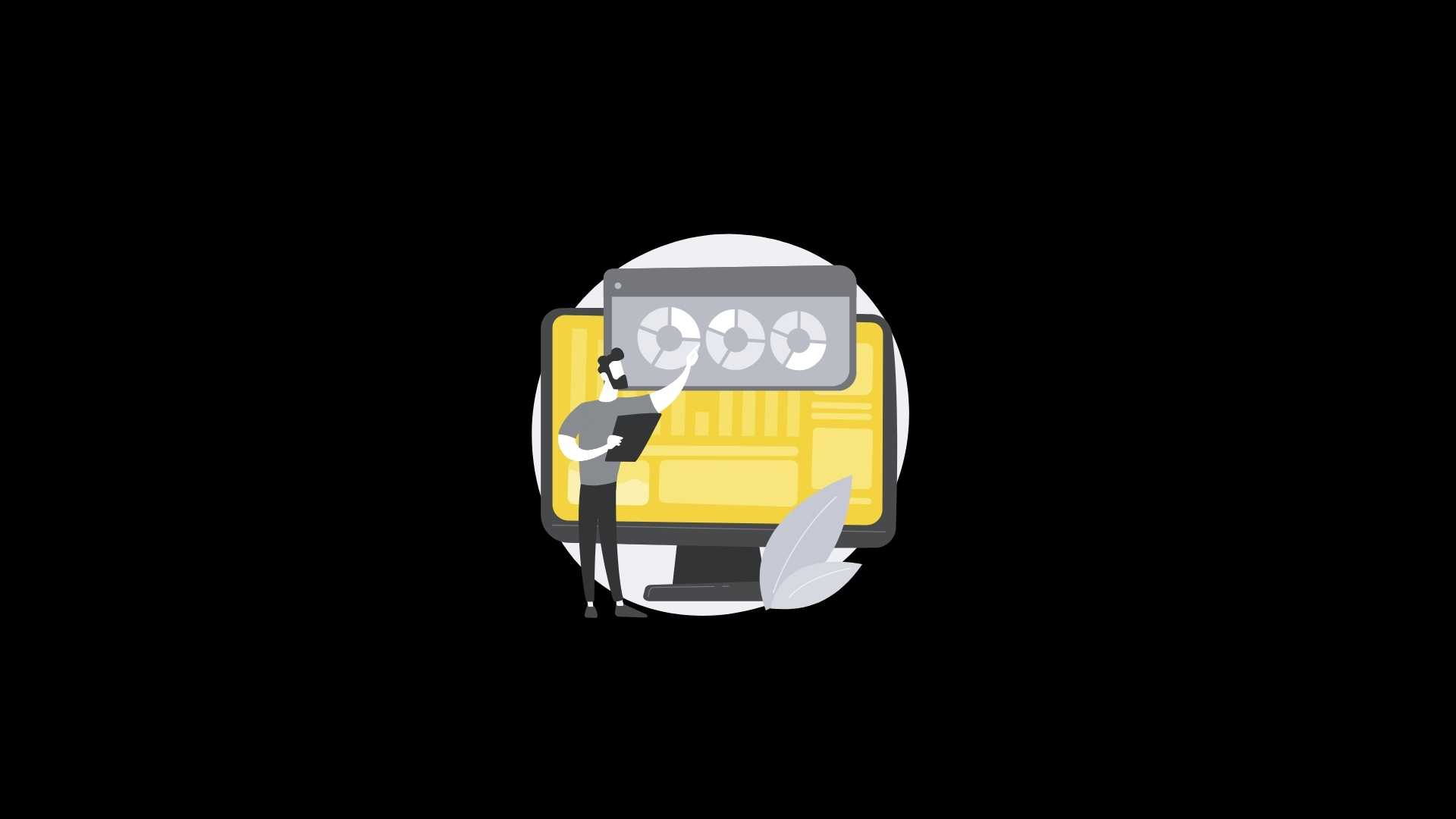We’re buried in stats—bounce rates, session times, click-throughs, the works.
Every landing page is practically swimming in data.
But here’s the real kicker: even with all those numbers, it’s way too easy to lose sight of what’s actually working and end up wondering, Is this even doing anything?
Obsessing over every little metric can have you chasing your tail, tweaking things that don’t move the needle.
What if there was one killer metric—a “North Star”—that slices through the clutter and shows you how well your landing page is vibing with the right audience and driving real results?
To get the scoop, the BoostMyDomain crew reached out to some rockstar digital growth experts and business leaders who eat, sleep, and breathe this stuff.
We hit them with a straight-up question: What’s the one metric that tells you more about your landing page’s performance than anything else?
Their insights are like a treasure map, pointing you straight to what counts and setting any business up to make waves with serious impact.
Read on!
Engaged-Session Rate Predicts Landing Page Health
Among KPIs, engaged-session rate (ESR) reveals landing-page health best. ESR is the share of visits that last 10 s+, trigger a conversion event, or reach two screens—compressing attention, relevance and UX into one number. Unlike bounce rate it rewards purposeful micro-interactions, and unlike pure conversion rate it surfaces friction before checkout, giving SEO teams an early-warning light they can actually influence.
When ESR rises, your snippet promised the right value, the page loaded fast, the hero copy matched intent and the layout guided exploration. When it dips, probe which pillar—speed, copy, design or offer—broke the flow and patch it before revenue feels the hit.
We track ESR by device and query class, then layer scroll-depth heat-maps and Core Web Vitals to prioritise sprint tickets. Rooted in real behaviour, not vanity, ESR keeps strategy locked on user-centred tweaks search engines reward—making it the single metric that speaks loudest about landing-page performance.
Conversion Rate Encapsulates All Landing Page Elements
If I had to pick one metric that tells me more about landing page performance than any other, it would be conversion rate.
While metrics like bounce rate, average time on page, and click-through rate all offer valuable insights, conversion rate directly reflects whether your landing page is doing its job—turning visitors into leads, subscribers, or customers. At Clearcatnet, where landing pages are designed to promote exam dump downloads or email sign-ups, even a 1-2% shift in conversion rate can signal whether the messaging, layout, or CTA is resonating with our audience.
What makes conversion rate so powerful is that it encapsulates many elements at once—design clarity, copy relevance, trust signals, and audience intent. If traffic is healthy but conversions are low, we know it’s time to tweak our offer, reposition the benefits, or test different headlines. On the flip side, high conversion rates tell us we’ve nailed the value proposition.
Scroll Depth: The Unsung Hero of Metrics
For me, scroll depth is the unsung hero of landing page metrics. Clicks and conversions are great, but if visitors aren’t even making it past the first few inches of content, something’s broken. Scroll depth tells you exactly where people lose interest. Maybe it’s a clunky headline. Maybe your CTA is buried. Either way, you’ll see the drop-off point in black and white.
Once, we moved a CTA 200 pixels higher on a high-bounce page. Conversions jumped 37% in two days. No A/B wizardry, just common sense backed by scroll data.
It’s a sanity check more than anything. You might think your content is irresistible, but scroll depth calls your bluff. Combine it with heatmaps, and you’ll get a crystal-clear picture of user intent, or lack thereof.
In short: if users aren’t scrolling, they’re not buying. And if they’re not buying, the page isn’t pulling its weight. Simple as that.

SEO Consultant, Mike Khorev
Conversion Rate Determines Your Landing Page Success
Conversion Rate is the statistic that reveals more to you about your landing page performance than anything else.
Why it’s so effective:
Your landing page only has one fundamental task: to convert — whether that’s:
– A sign-up
– A purchase
– A download
– A form submission
Regardless of how great your traffic is, if you have a low conversion rate, your landing page is failing to do its job.
Why it’s special:
– It gets message match: Does headline, image, and promotion align with what brought the visitor in?
– It raises UX friction: Is the site confusing, slow, or overwhelming?
– It’s the ROI driver: More conversion = less cost per acquisition.
Bonus Tip:
Break it down by source (paid vs. organic) or variant (A/B tests). That’s where the real insights — and optimizations — live.
And if you only have one key to measure landing page success, make it conversion rate. All else is context.

CEO, BoostVision
CTA Conversion Rate Measures Real Page Impact
The metric I watch like a hawk when it comes to landing page performance? Call-to-Action Conversion Rate.
I’m not talking about bounce rate or time-on-page—those are useful, but they don’t tell me if the page is doing its job. At Ridgeline Recovery, our landing pages don’t exist to impress—they exist to help someone take that first terrifying step toward treatment. And that comes down to one thing: did they reach out or not?
If someone visits our landing page, reads the content, and then clicks “Call Now” or fills out our secure intake form—that’s a conversion. That tells me the message landed, the design worked, and we met that person at the exact emotional place they were in.
Here’s what I’ve learned: you can have the prettiest landing page in the world, but if your CTA isn’t converting, it’s just a digital brochure. I’d rather have 100 visits with a 15% conversion rate than 1,000 visits with a bunch of window shoppers.
A few months ago, we made a small change that nearly doubled our CTA rate—we changed the button text from “Submit” to “Get Help Now.” That sounds tiny, but for someone in crisis, it matters. “Submit” feels cold. “Get Help Now” speaks to urgency, to humanity.
Every week, we check our landing page’s CTA conversion. If it drops, we don’t panic—we diagnose. Was it load time? Was the message unclear? Did we bury the CTA too low? That number is our gut check. It tells us if we’re cutting through the noise and actually connecting.
Bottom line: in a business where every click could represent a life hanging in the balance, conversion is the only metric that truly matters.

Owner, Ridgeline Recovery LLC
Conversion Rate Shows True Landing Page Persuasion
For me, the most telling metric is the conversion rate. It shows how many visitors take the desired action, whether that’s signing up, buying, or downloading, right on the landing page.
High traffic means nothing if people don’t convert. So conversion rate gives a clear picture of how well your page persuades and guides visitors.
Tracking this metric helps identify what’s working and what needs improving, making it the single best indicator of landing page success.

Digital Marketer, JPGHero
Conversion Rate Reveals Your Page's True Value
Conversion rate is the best way to find out how well your landing page is doing. It is directly related to the page’s main goal, which could be form submissions, contact clicks, or purchases. Bounce rate and click-through rate give you useful information, but conversion rate is the most important KPI.
It shows how well your design, messaging, and user flow match what the visitor wants. If a lot of people visit your page but not many of them are “converting” that’s a clear sign that something isn’t working right.

Senior Marketing Consultant, BeastBI GmbH
Conversion Rate: The Ultimate Design Feedback Loop
The one metric I always pay closest attention to on a landing page is conversion rate. It tells you, more than anything else, whether the page is actually working — not just attracting visitors, but moving them to take action. Traffic and engagement are nice to track, but conversion is the clearest sign that your design and message are aligned with what your audience needs.
At Fixel, we treat conversion as the ultimate design feedback loop. If something’s not converting, it’s not communicating. Every element — from headline to button — has to earn its place by guiding users toward a decision. That’s how we build landing pages that don’t just look good, but perform.

Founder and Creative Director, Fixel Design Agency
It’s All About Clicks and What They Tell You
Landing pages are there to get people to click, so this is probably the most important metric to focus on.
How often people click, what they click on, and how many of those clicks turn into sales or downloads will all help you get at how well your landing page is working.
This is especially important for work like A/B testing to identify the most effective page layouts and calls to action.

Founder & CEO, Caily
On behalf of the BoostMyDomain community of readers, we thank these leaders and experts for taking the time to share valuable insights that stem from years of experience and in-depth expertise in their respective niches.
BoostMyDomain invites you to share your insights and contribute to our authoritative publication. Reach a wider audience, build your credibility, and establish yourself as a thought leader in an industry that caters to every business with an online presence!


